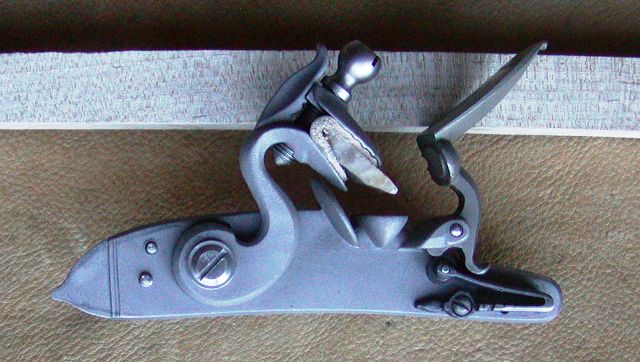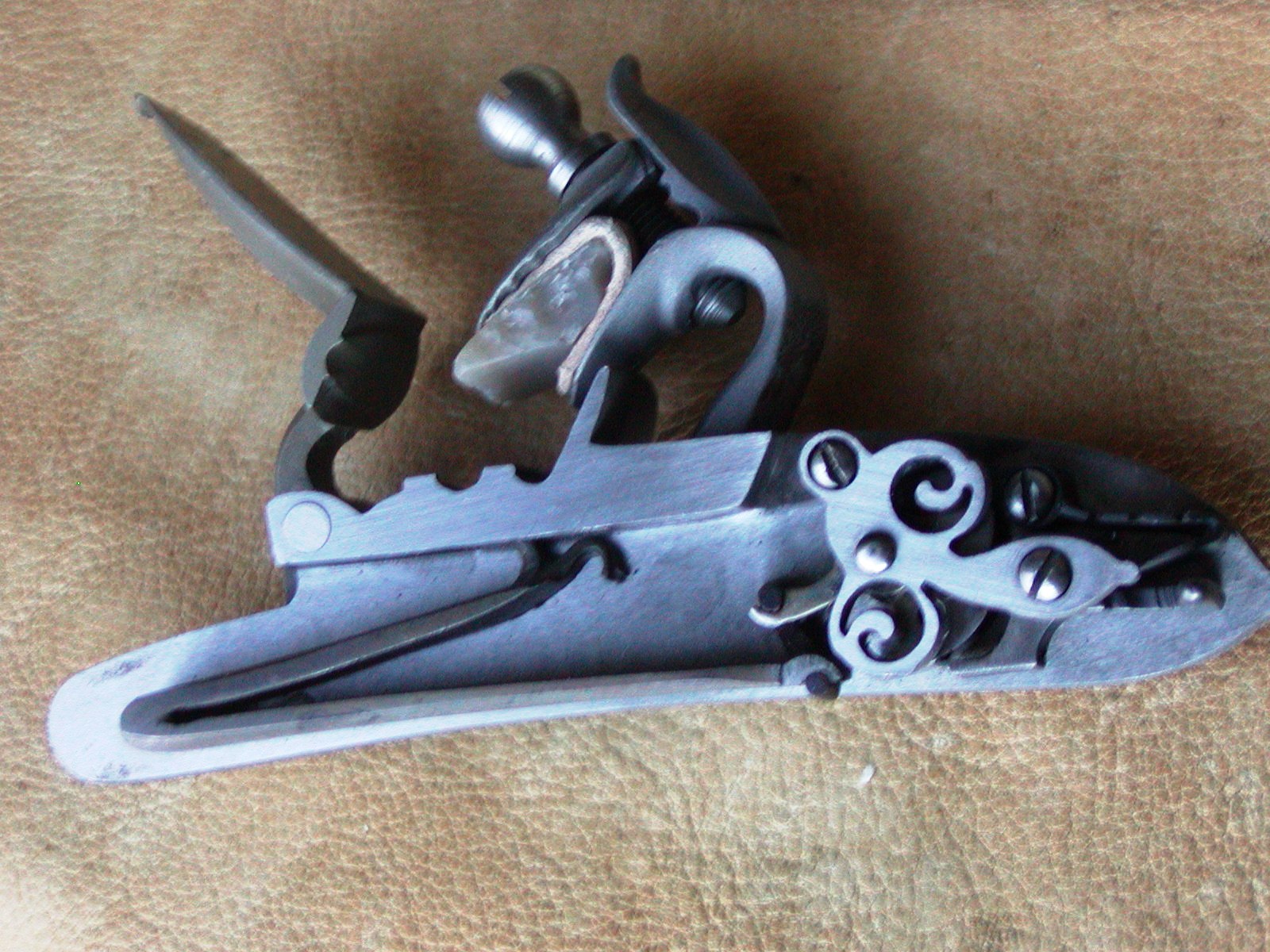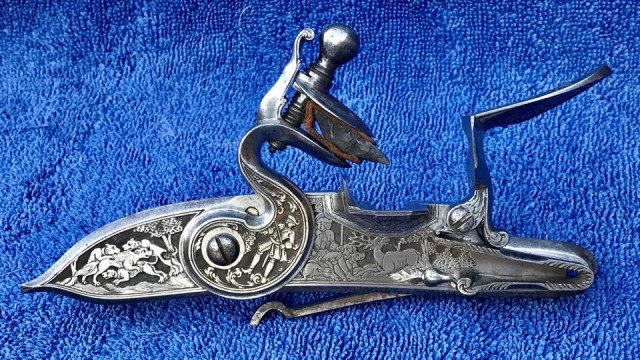- Joined
- Nov 26, 2005
- Messages
- 5,010
- Reaction score
- 9,945
Hi,
We have 2 new lock offerings that raise the bar of quality very high. The first is a Germanic lock by Chris Laubach. It is appropriate for Jaegers and early American long rifles. The entire lock is CNC machined to very high tolerances. It is the first commercial lock I've seen that does not require any tuning, cleaning up, or extensive polishing before inletting. You can get more info here: https://firelocksllc.com/.
The second lock is a round-faced 1750-1760 English lock by Jim Kibler. All parts are CNC machined from scratch except the frizzens, flintcocks, and top jaws. Even those parts are machined after casting for precise fitting. This is likely the finest round-faced lock available at this time. You can find out more here: https://kiblerslongrifles.com/collections/locks/products/kibler-colonial-flintlock
It is very exciting to have these new offerings and I think they open a new era of quality components.
dave
We have 2 new lock offerings that raise the bar of quality very high. The first is a Germanic lock by Chris Laubach. It is appropriate for Jaegers and early American long rifles. The entire lock is CNC machined to very high tolerances. It is the first commercial lock I've seen that does not require any tuning, cleaning up, or extensive polishing before inletting. You can get more info here: https://firelocksllc.com/.
The second lock is a round-faced 1750-1760 English lock by Jim Kibler. All parts are CNC machined from scratch except the frizzens, flintcocks, and top jaws. Even those parts are machined after casting for precise fitting. This is likely the finest round-faced lock available at this time. You can find out more here: https://kiblerslongrifles.com/collections/locks/products/kibler-colonial-flintlock
It is very exciting to have these new offerings and I think they open a new era of quality components.
dave









